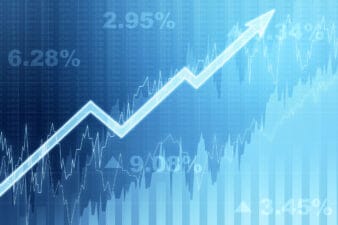Brookfield Asset Management Inc. (TSX:BAM.A)(NYSE:BAM) delivered strong second-quarter earnings in August, but the stock pulled back anyway, providing a great opportunity to pick up shares. They reached a low of $47.11, the lowest they’ve been since the beginning of 2017. Since then, though, shares are up over 12.5%, leaving investors questioning if Brookfield is still a good investment.
While it’s true shares are certainly more expensive, I remain bullish on the company’s long-term prospects and believe investors should use Brookfield as a core portfolio holding. Few other companies can give you exposure to such a diverse bag of assets like Brookfield, and the second-quarter results show that.
Assets under management continue to rise. In total, the company is sitting on US$257.5 billion, which is up 5.8% from a year prior. When you have that much on your book, you can get creative in ways you or I could only dream of. And when you’ve got solid management like Brookfield does, that creativity can be lucrative.
CEO Bruce Flatt is a value investor through and through. And when value investors realize that an asset is overvalued, they take the necessary step to sell. Although value investors are taught to buy and hold, it’s even smarter to recognize when an asset is overvalued and sell it, perhaps buying again when that same asset has become undervalued. And that’s exactly what Flatt is doing.
In the Q2 letter to shareholders, Flatt said, “we sold a New York office property for $2.21 billion, a London office building for £410 million, and various other assets at attractive prices.” But Brookfield didn’t just sell. “In total, we invested US$9 billion across the business during the quarter. This included a regulated gas transmission business, a road fuel distribution company, a water distribution business, and various real estate properties globally.”
In essence, Brookfield sells an asset when it is overvalued and then takes that cash to buy other assets that the company views to be undervalued. This recycling of capital is how Brookfield can continue to generate strong returns.
Brookfield also deploys a strategy of spinning off publicly listed subsidiaries when it owns enough of that particular asset class, including renewable energy, infrastructure, and real estate. Brookfield gains two benefits from these relationships.
First, Brookfield is an investor, just like you and me. So, it earns dividends. These subsidiaries deliver over US$1.2 billion in cash dividends on an annual basis.
Second, Brookfield earns fees from these firms, since Brookfield is the asset manager. Its annualized base fees across all the subsidiaries totaled US$515 million, up 21%. On top of that, it earned an additional US$203 million in incentive distribution rights and performance fees.
Ultimately, the thesis for investing in Brookfield is simple. It has a massive portfolio of assets spread across a variety of different sectors. It buys and sells when assets go from undervalued to overvalued, providing a great recycling effort. And, along the way, it earns dividends and management fees to add even more cash to its books.
It may not be as cheap as it was in August, but I still believe investors would be smart to add Brookfield Asset Management to their portfolios.







